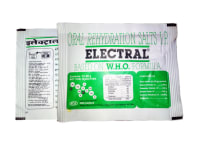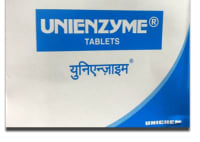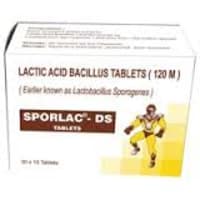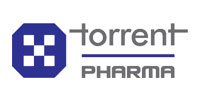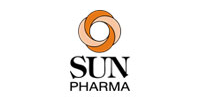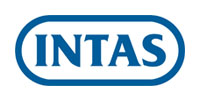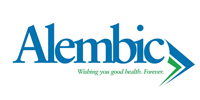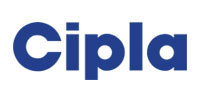
USED FOR:
Psoriasis
Acne
Keratoses (Abnormal skin growth)
COMPOSITION:
Benzoyl Peroxide (5% w/w)
Clindamycin Topical (1% w/w)
Therapeutic Uses:
derma

No interaction found

WEIGH RISKS VS BENEFITS
Aclind BP 5% Gel may be unsafe to use during pregnancy.Animal studies have shown adverse effects on the foetus, however, there are limited human studies. The benefits from use in pregnant women may be acceptable despite the risk. Please consult your doctor.

Aclind BP 5% Gel is probably safe to use during lactation. Limited human data suggests that the drug does not represent a significant risk to the baby.

SAFE
Aclind BP 5% Gel does not usually affect your ability to drive.

Aclind BP 5% Gel is probably safe to use in patients with kidney disease. Limited data available suggests that dose adjustment of Aclind BP 5% Gel may not be needed in these patients. Please consult your doctor.

Aclind BP 5% Gel is probably safe to use in patients with liver disease. Limited data available suggests that dose adjustment of Aclind BP 5% Gel may not be needed in these patients. Please consult your doctor.
Uses of Benzoyl Peroxide
Benzoyl Peroxide is used in the treatment of psoriasis, keratoses and dermatitis.
How to use Benzoyl Peroxide
Use this medicine in the dose and duration as advised by your doctor. Check the label for directions before use. Apply it on the affected area and allow it to stay before spitting or rinsing.
How Aclind BP 5% Gel works
Benzoyl peroxide attacks the bacteria (germs) known as Propionibacterium acnes, one of the main causes of acne. It also has peeling and drying properties..
Common Dry skin, Erythema, Skin peeling, Burning sensation.
Expert advice for Benzoyl Peroxide
This medicine is for external use only. Always wash your hands after using benzoyl peroxide.
Avoid exposure to strong sunlight or UV lamps while using benzoyl peroxide. If unavoidable, use a suitable sunscreen lotion and apply benzoyl peroxide in the evening after washing the skin.
Avoid contact with the eyes, mouth, nose (especially mucous lining). If any accidental contact occurs, rinse thoroughly with warm water.
Benzoyl peroxide should not be applied to damaged skin.
This product may bleach hair and colored fabrics including clothing, towels and bed linen. Be careful to avoid contact of the gel with these materials.
Caution should be exercised when applying benzoyl peroxide to the neck and other sensitive areas.
Do not stop using benzoyl peroxide if your skin condition appears to worsen for the first 2 to 3 weeks of treatment.
Do not apply benozyl peroxide if you are allergic to benzoyl peroxide or any of the other ingredients of this medicine.
Avoid using benozyl peroxide if you are pregnant or think you may be pregnant or are breast-feeding.
Do not apply benozyl peroxide if you are using any other acne products or medicines with peeling, irritant and drying effects.
Q. Does benzoyl peroxide work/ is benzoyl peroxide good for skin/pimples/acne/acne marks/ acne scars/ dark spots?
Benzoyl peroxide is effective in treating acne on face, chest or back in most of the people where the skin has a lot of blackheads, spots and pimples. It can be helpful in treating acne marks, scars and dark spots
Q. Does benzoyl peroxide darken skin/cause hyperpigmentation/peel skin/bleach skin/cause redness?
Benzoyl peroxide may cause redness, peel the skin and also bleach skin and hair. It doesn't darken the skin or cause hyperpigmentation, but it should be best to use it under a doctor's supervision
Q. Is benzoyl peroxide a BHA/an antibiotic/ retin a/salicylic acid?
Benzoyl peroxide is not a beta hydroxy acid (BHA), antibiotic, retin A or salicylic acid
Q. Is benzoyl peroxide the same as hydrogen peroxide?
No, benzoyl peroxide is different from hydrogen peroxide.
Uses of Clindamycin Topical
Clindamycin Topical is used in the treatment of acne.
How to use Clindamycin Topical
Use this medicine in the dose and duration as advised by your doctor. Check the label for directions before use. Apply it on the affected area and allow it to stay before spitting or rinsing.
How Aclind BP 5% Gel works
Clindamycin Topical is an antibiotic. It stops bacterial growth by inhibiting synthesis of essential proteins, which are required by bacteria to carry out vital functions.
Expert advice for Clindamycin Topical
Discontinue use of topical clindamycin and contact your doctor immediately, if you experience diarrhea or bloody diarrhea.
Avoid vaginal intercourse or use of other intravaginal products such as tampons or douches while using clindamycin cream.
Clindamycin cream contains mineral oil that may weaken latex products (condoms and diaphragms) and may not provide adequate birth control. Therefore, do not use these products within 72 hours of using clindamycin cream.
Avoid direct contact of cream with your eyes. In case of direct contact, wash your eyes with water and seek immediate medical attention.
Tell your doctor if you are or planning to become pregnant or are breastfeeding.
Do not use if you are allergic to clindamycin, lincomycin or any of its ingredients.
Do not use if you have Crohn’s disease (a chronic inflammatory disease of the intestines), antibiotic-associated colitis (colon inflammation).
Q. Can I use clindamycin with a penicillin allergy?
Clindamycin is considered safe for use in patients with a penicillin allergy
Q. Does clindamycin treat acne scars?
Clindamycin can prevent the formation of new scars by preventing formation of new acne, but will not be useful for the scars already formed
Q. Can clindamycin cream cause thrush?
Yes. Use of clindamycin cream may cause thrush (a type of fungal or yeast infection) in rare cases.
Glaxo SmithKline Pharmaceuticals Ltd
₹7.72/Gel Out of stock


 Aclind BP 5% Gel
Aclind BP 5% Gel  Bookmark
Bookmark


